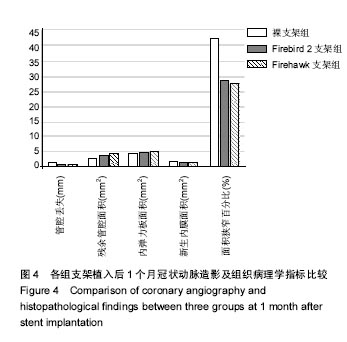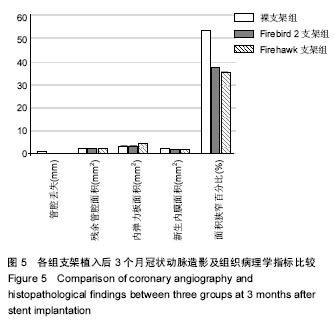| [1]Shetty R,Prajapati J,Pai U,et al.Preliminary Evaluation of Clinical and Angiographic Outcomes with Biodegradable Polymer Coated Sirolimus-Eluting Stent in De Novo Coronary Artery Disease: Results of the MANIPAL-FLEX Study. Scientifica (Cairo). 2016;2016:9324279.[2]Liu HL,Jin ZG,Yang SL,et al.Five-year outcomes of ST-elevation myocardial infarction versus non-ST-elevation acute coronary syndrome treated with biodegradable polymer-coated sirolimus-eluting stents: Insights from the CREATE trial.J Cardiol.2016. pii:S0914-5087(16)00059-9. [3]Shetty R,Vivek G,Thakkar A,et al.Experience with biodegradable polymer coated sirolimus-eluting coronary stent system in "real-life" percutaneous coronary intervention: 24-month data from the manipal-s registry.J Clin Diagn Res. 2013;7(9):1959-1963.[4]邱洪,罗彤,胡小莹,等.新型生物可降解聚合物雷帕霉素靶向洗脱支架预防支架内狭窄的动物实验研究[J].中国循环杂志, 2012, 27(3):220-223.[5]Suzuki T, Kopia G, Hayashi S, et a1.Stent-based delivery of sirolimus reduces neointimal formation in a potcine coronary model.Circulation.2001;104:1188-1193.[6]Lemos PA,Chandwani P,Saxena S,et al.Clinical outcomes in 995 unselected real-world patients treated with an ultrathin biodegradable polymer-coated sirolimus-eluting stent: 12-month results from the FLEX Registry.BMJ Open. 2016; 6(2):e010028.[7]Lim KS,Park JK,Jeong MH,et al.Effect of stents coated with a combination of sirolimus and alpha-lipoic acid in a porcine coronary restenosis model.J Mater Sci Mater Med. 2016; 27(4):66. [8]Prado GF Jr,Ribeiro EE,Melo PH,et al.Clinical performance of a novel ultrathin strut, low-dose, sirolimus-eluting stent with abluminal-only biodegradable polymeric coating for patients undergoing percutaneous coronary intervention in the daily practice. Cardiovasc Diagn Ther.2015;5(6):414-419. [9]Chandwani P,Verma P,Saxena S,et al.Comparison of Clinical Outcomes Following Single versus Multivessel Percutaneous Coronary Intervention Using Biodegradable Polymer Coated Sirolimus-Eluting Stent in an All-comers Patient Population. Cardiovasc Hematol Agents Med Chem. 2016;14(1):39-48.[10]Polavarapu A,Polavarapu RS,Prajapati J,et al.Clinical Outcomes from Unselected "Real-World" Patients with Long Coronary Lesion Receiving 40 mm Biodegradable Polymer Coated Sirolimus-Eluting Stent. Scientifica(Cairo).2015; 2015: 613089. [11]Sarma R,Prajapati J,Raheem A,et al.Nine-Months Clinical Outcome of Biodegradable Polymer Coated Sirolimus-eluting Stent System: A Multi-Centre "Real-World" Experience. J Clin Diagn Res.2015;9(8):OC23-26. [12]Polavarapu A,Polavarapu RS,Prajapati J,et al.Favorable Outcomes after Implantation of Biodegradable Polymer Coated Sirolimus-Eluting Stents in Diabetic Population: Results from INDOLIMUS-G Diabetic Registry.Int J Vasc Med. 2015;2015:265670. [13]Lemos PA,Abizaid AA,Meireles GC,et al.Metallic Limus-Eluting Stents Abluminally Coated with Biodegradable Polymers: Angiographic and Clinical Comparison of a Novel Ultra-Thin Sirolimus Stent Versus Biolimus Stent in the DESTINY Randomized Trial. Cardiovasc Ther. 2015;33(6): 367-371.[14]Oliveira MD,Ribeiro EE,Campos CM,et al.Four-year clinical follow-up of the first-in-man randomized comparison of a novel sirolimus eluting stent with abluminal biodegradable polymer and ultra-thin strut cobalt-chromium alloy: the INSPIRON-I trial. Cardiovasc Diagn Ther.2015;5(4):264-270. [15]Sojitra P,Doshi M,Galloni M,et al.Preclinical evaluation of a novel abluminal surface coated sirolimus eluting stent with biodegradable polymer matrix. Cardiovasc Diagn Ther. 2015;5(4):254-263. [16]Rajasekhar D,Vanajakshamma V,Vidyasagar A,et al. Evaluation of prolonged safety and efficacy of biodegradable polymer coated sirolimus-eluting coronary stent system: 1-year outcomes of the INDOLIMUS Registry.Cardiovasc Diagn Ther.2015;5(4):249-253. [17]Otsuka F,Cheng Q,Yahagi K,et al.Acute Thrombogenicity of a Durable Polymer Everolimus-Eluting Stent Relative to Contemporary Drug-Eluting Stents With Biodegradable Polymer Coatings Assessed Ex Vivo in a Swine Shunt Model.JACC Cardiovasc Interv.2015;8(9):1248-1260.[18]Xu B,Zhang YJ,Sun ZW,et al.Comparison of long-term in-stent vascular response between abluminal groove-filled biodegradable polymer sirolimus-eluting stent and durable polymer everolimus-eluting stent: 3-year OCT follow-up from the TARGET I trial. Int J Cardiovasc Imaging. 2015;31(8): 1489-1496. [19]Konishi A,Shinke T,Otake H,et al.Serial Optical Coherence Tomography Evaluation at 6, 12, and 24 Months After Biolimus A9-Eluting Biodegradable Polymer-Coated Stent Implantation.Can J Cardiol.2015;31(8):980-988. [20]Banker D,Ahuja A,Sanadhya H,et al.Clinical performance of biodegradable polymer-coated sirolimus-eluting stents in unselected real-world population with coronary artery disease: results from the multicenter CORE Registry.Minerva Cardioangiol.2016;64(1):9-14. [21]Gao Z,Zhang R,Xu B,et al.Safety and efficacy of a novel abluminal groove-filled biodegradable polymer sirolimus-eluting stent for the treatment of de novo coronary lesions: two-year results from a prospective patient-level pooled analysis of TARGET trials.Catheter Cardiovasc Interv. 2015;85 Suppl 1:734-743. [22]Sprimont P,Pierard S,Vanoverschelde JL,et al.Efficacy and safety of biodegradable polymer biolimus A9-eluting stent versus durable polymer everolimus-eluting stent in diabetic patients: a prospective non-randomized single-centre long-term comparison.Acta Cardiol.2014;69(5):523-531.[23]Han Y,Xu B,Jing Q,et al.A randomized comparison of novel biodegradable polymer- and durable polymer-coated cobalt-chromium sirolimus-eluting stents. JACC Cardiovasc Interv. 2014;7(12):1352-1360. [24]Kumar P,Pillai R,Sreedharan M,et al.RAPSTROM™ first-in-man study long-term results of a biodegradable polymer sustained-release sirolimus-eluting stent in de novo coronary stenoses.J Interv Cardiol.2014;27(4):373-380. [25]Zhang Q,Qiu JP,Kirtane AJ,et al.Comparison of biodegradable polymer versus durable polymer sirolimus-eluting stenting in patients with acute st-elevation myocardial infarction undergoing primary percutaneous coronary intervention: results of the RESOLVE study.J Interv Cardiol.2014;27(2):131-141.[26]Zhang L,Li Y,Jing QM,et al.Dual antiplatelet therapy over 6 months increases the risk of bleeding after biodegradable polymer-coated sirolimus eluting stents implantation: insights from the CREATE study.J Interv Cardiol.2014;27(2):119-126.[27]Finn AV,Nakagawa G,Joner M,et al.Vascular responses to drug eluting stents:importance of delayed healing.Arterioscler Thromb Vase Biol.2007;27:1500-1510.[28]Lowe HC,Schwartz RS,Mac NB,et al.111e porcine coronary model of in-stent restenosis:current status in the era of drug-eluting stents.Catheter Cardiovasc Interv.2003;60: 515-523.[29]金刚,高润霖,程树军,等.可降解雷帕霉素洗脱支架对猪冠状动脉支架置入术后内膜增生的影响[J].中国循环杂志, 2004,19(3): 190-193.[30]祁方家,冯莎,吴伟栋,等.药物洗脱支架火鹰(Firehawk)与XIENCE V治疗单支单处冠状动脉病变的卫生经济学评价[J].中国卫生资源,2015,15(4):283-286. [31]何强.新型单面刻槽载药支架内皮化的光学相干断层成像评价[D].天津医科大学,2014.[32]刘慧竹.雷帕霉素靶向洗脱支架治疗冠心病临床及血管内影像研究[D].上海交通大学,2015. |
.jpg)




.jpg)
.jpg)
.jpg)
.jpg)